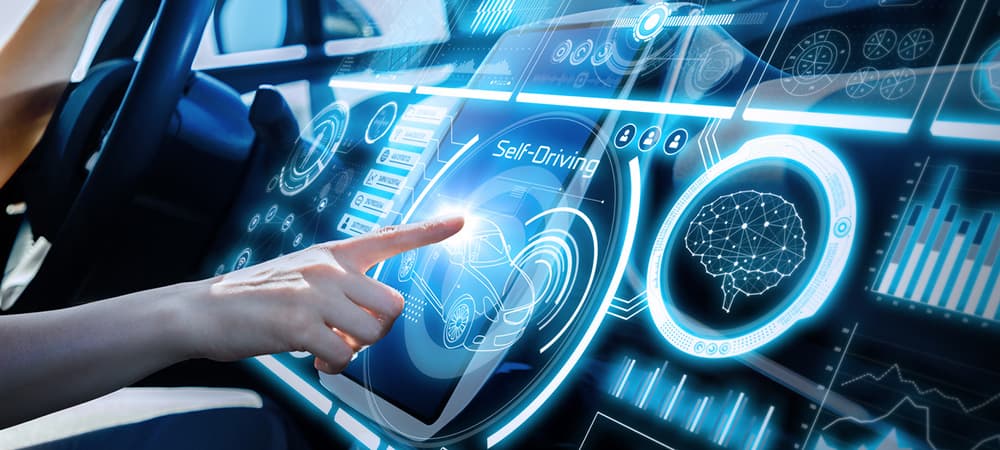In the article below, Car From Japan will learn with you some basic information about the advanced vehicle type and notable self-driving cars pros and cons. A vehicle type integrated with super modern technology, undoubtedly, can bring up many uncomparable benefits. However, it will also have some weird set-up features that you will have to consider before taking a ride.
Contents
What Is A Driverless Car?
The modern world has changed our lives a lot compared to before. People have been striving to make life easier and more comfortable than ever. One way or another, we continue to grow physically and mentally with higher lives and smarter, bolder thoughts.
By creating more and more advanced technological conveniences to aim at the highest comfort level of life, people have started building bunkers and blooming high-tech empires with the thrive of machines that can take over labor jobs and quicken the working times. One of the most remarkable technological achievements in recent years, even things that are still far from perfect, are self-driving cars, or driverless cars.
Driverless cars (self-driving cars), simply put, are cars with built-in sensors that can perceive the surrounding environment and obstacles locations to operate without the need for manual control by humans. Nowadays, many large car manufacturers and technology corporations in the world have participated in the race to develop modern self-driving cars without any human intervention, including prominent names like Google, Tesla, and Daimler.
For driverless cars, the machine computer plays the most vital role as it is considered the brain ensuring the optimized car operation. If in the past, cars were always characterized by engines, transmissions, actuators, steering wheels, gasoline, etc., today, it’s like a computer.
How Do Self-driving Cars Work?
According to Sridhar Lakshmanan, a self-driving car expert – an Engineering professor at the University of Michigan – Dearborn, a car can only drive itself if it meets some specified criteria below.
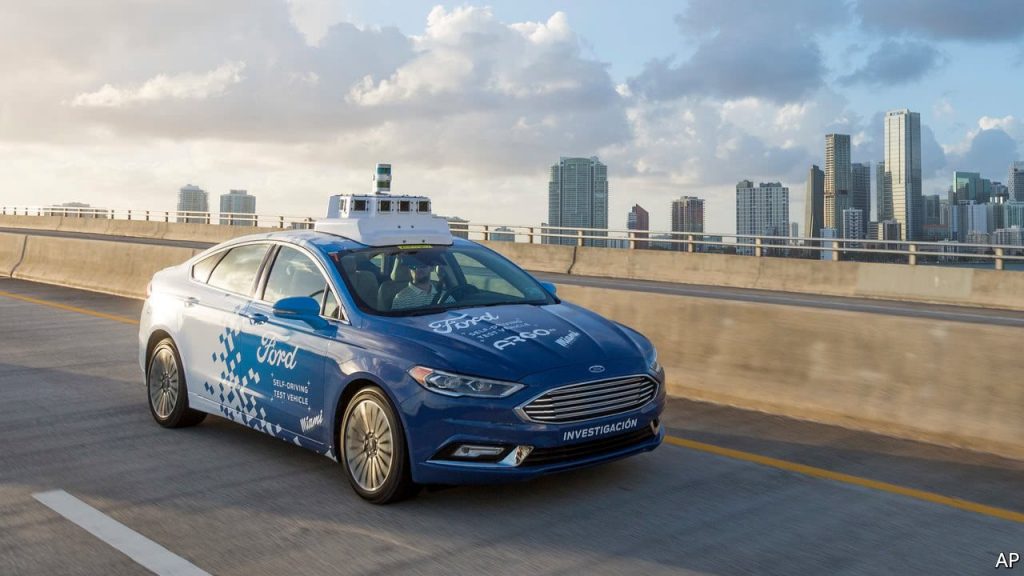
For more details, the GPS will determine the task of the self-driving car by setting the start and endpoints of the journey based on the navigation feature of Google Maps. Other support technology systems such as radar, LiDAR, GPS, computer vision, cameras will detect and handle every minute-updated unpredictable situation while obeying the traffic rules and signs.
In particular, the cameras support the computer system with the observing task. The radars, along with one digital map, help sense and identity the road ahead within a distance of 100 meters. And the laser scans the phenomena occurring around continuously to send signals to the computer system. Overall, self-driving cars will provide multiple high-tech features so that the driver can interact with this new 4.0 type of vehicle in the most simple and easy way.
Reading traffic signs and lights, tracking pedestrians and obstacles, marking road lanes, monitoring the position of curbs and nearby cars while parking, and so on. All these advanced high-tech features are interpreted and processed by a central computer that analyzes detailed road data to help the car steer, accelerate, brake, and turn as needed.
Different Levels of Driverless Cars
According to the Society of Automotive Engineers (SAE International) and the National Highway Traffic Safety Administration (NHTSA), self-driving cars are classified into 6 levels, from level 0 to level 5.
Level 0: Manual
Most of the vehicles commuting on the road today operate manually. This is the level where the vehicle is completely dependent and the driver is responsible for all vehicle operations.
Level 1: Driving Assistance
At this level, the driver and the automated system share control of the vehicle as steering, changing or maintaining speed (cruise control), or automatic emergency braking warning the driver in the event of a collision. The vehicle is only capable of performing a single automatic task to assist the driver.
Level 2: Partial Automation of Driving
Level 2 vehicles are integrated with advanced automatic functions capable of performing more than one task, can control both direction and acceleration/deceleration, lane departure warning/correction. However, the driver must still monitor the driving and be ready to intervene immediately at any time if the automated system fails to respond properly.
Vehicles with Level 2 autonomy include Tesla Autopilot, Volvo Pilot Assistant, Cadillac Super Cruise, and Mercedes-Benz Drive Pilot.
Level 3: Conditional Automation
Level 3 autonomous cars can perceive their surroundings and make decisions for themselves, such as speeding past slow-moving vehicles; autonomously from the starting point to the destination without human involvement under certain conditions. If the system cannot operate reliably, the driver must remain alert and ready to take control. The only vehicle accepted as a Level 3 automatic so far is the Audi A8.
Level 4: High Automation
At this level, the cars don’t need human interaction in most cases. Self-driving is only supported in confined spaces (geo-fenced) or under special circumstances. Outside of these areas or circumstances, the vehicle must be able to safely end the trip if the driver fails to regain control of himself. Currently, there are no cars available at this level of automation.
Level 5: Full automation
This is the ultimate goal of a car that can operate autonomously in all situations and conditions. At this level, the car will be completely free of any human intervention, not even a steering wheel or accelerator/brake pedal. Vehicles can be used anywhere, doing anything an experienced driver can do.
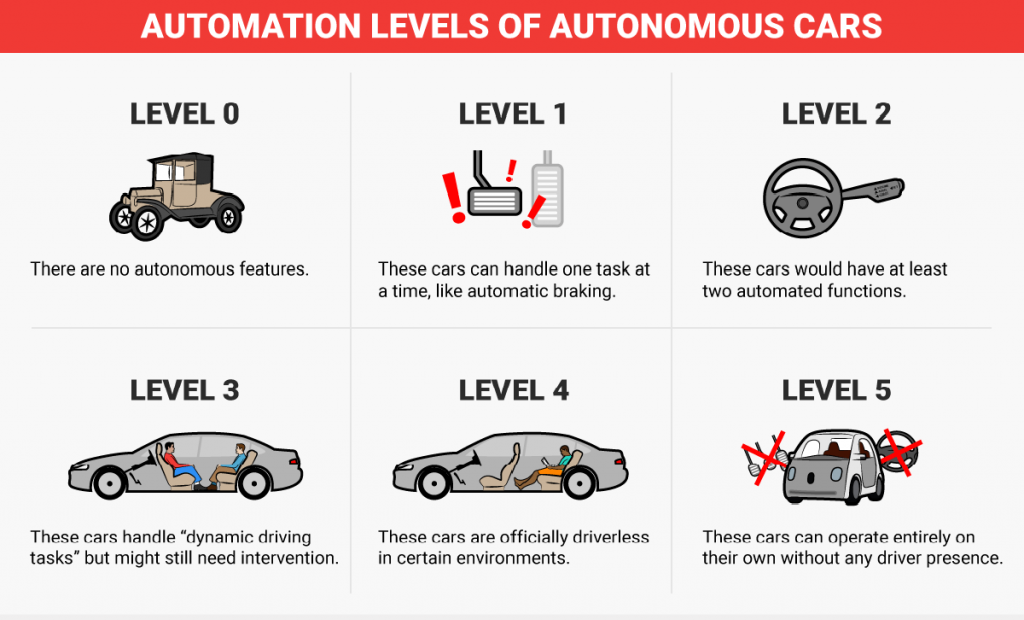
>> Check out for more details: Levels of Autonomous Driving: A Beginner’s Guide
Self-driving Cars Pros And Cons: Dig Deeper Into The Core
We have just gone through 6 levels toward the automated car in the new technology age. Surely, the golden moments when people can completely rely on self-driving cars will be memorable. However, with their powerful appearance in this decade, we have already experienced some features coming from the future. Since they have not reached the highest level and are not synchronized on streets yet, driverless cars still have a few things to show to be fully trusted and become widely known.
So, to answer the continuous wonder are driverless cars a good idea for your convenience for a lifetime, take a closer look at the following self-driving cars pros and cons of this type of futuristic automobile.
Advantages of Driverless Cars
Autonomous driving technology can bring tons of great benefits to people thanks to its multiple modern features. Fast, convenient, and likely to be widely available, we can now partly claim that these are cars from the future.
Here are some self-driving cars pros for your quick reference.
1. Reduce Traffic Congestion
With technological prowess surpassing that of human functions, driverless cars are capable of eliminating the problems of subjectivity related to humans. Self-driving technology on both city roads and highways can solve the core problems of traffic congestion.
Programmed self-driving cars can communicate on their own while keeping an equal distance from other vehicles at the safest and most optimized speeds. When the first car breaks down, the following can effectively react, and then the previous one will also slow down in real-time. All contribute to an efficient and consistent domino process on the road, where no one will have to jostle to get ahead. With mass self-driving technology, cars will be able to accelerate at the same time when the light is green, and traffic jams in the city will be significantly reduced.
Not only that, but driverless cars can also help us head to a future with open roads without the need for traffic lights. Traffic lights are just a way for cars at intersections to communicate with each other.
Self-driving technology can connect cars to a mainframe, where they can all communicate in real-time and at the speed of light. We will no longer need traffic lights because all types of transportation on the road will know when to stop and go via signals built on super-advanced artificial intelligence programs.
2. Ensure Safety For Drivers
Automation, just as its name suggests, brings people to future full-sensor-equipped roads that are modern and safe. According to statistics, over 90% of accidents happen due to drivers’ attitudes and carelessness. Self-driving cars, when they are still in the sketches, before their inception, have been destined on a mission for people’s safety and carefree, in more detail, is to ensure that there will be no problems once everyone sets foot out of their house and start commuting.
The mistakes and carelessness of the driver will often cause many bad results. Even the driver can not anticipate, but a short second is enough to make things go off the track. However, with modern technology, electrical engines will be programmed precisely for every second, and that rigor will help reduce accidents caused by human distractions.
Let’s hope that one day, we will never have to see drunk drivers swerving, blocking other cars, forgetting to turn signals, and speeding racers at the wrong time on the road.
Wondering how safe are self-driving cars, you can check them yourself in the near future. Let’s get ready until then.
3. Reduce Environmental Pollution
Manual cars, even those equipped with the most advanced features, are all developed from a ground frame, consisting of an engine powered by gasoline or diesel. More or less, the fuels that keep your car operating on the road will convert inside, and the car will have to dismiss some unclean substances into the environment.
With self-driving cars, you can be assured of multiple clean and low-smog roads in all directions, from which the greenhouse effect and the intense heat or the severe cold you are suffering every day will be somewhat milder.
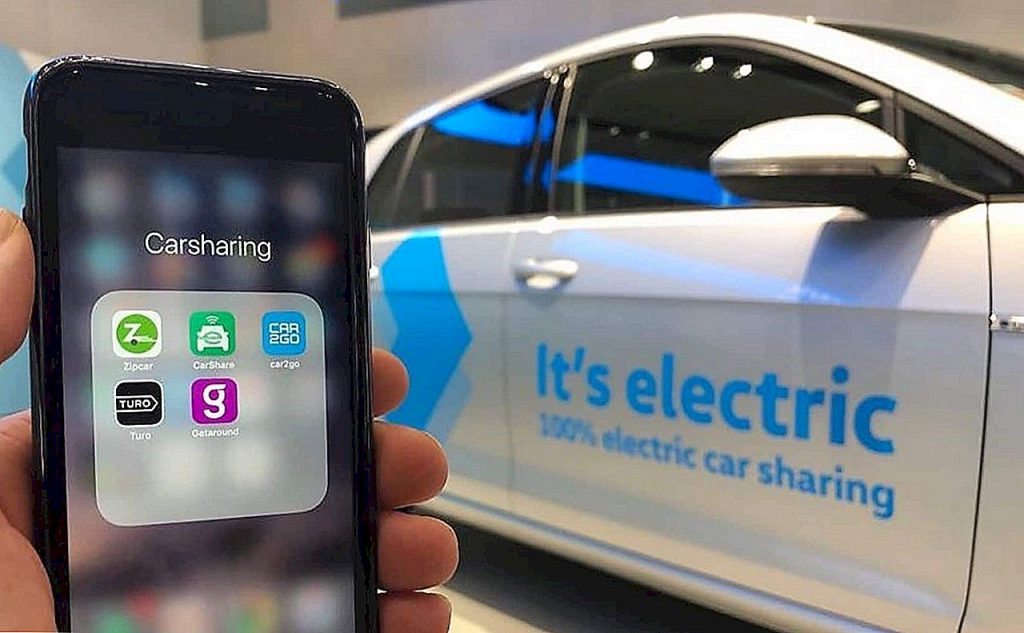
When people travel together in a vehicle that consumes less fuel, the total amount of burned fuels and emissions spread into the air also decrease exponentially.
4. People Can Be More Productive Even On The Road
Another advantage of driverless cars is that the technology, when reaches the highest level of automation and is widely developed, can help people save and have more time to complete any task without spending nearly an hour on more hand driving.
We can sit still safely and comfortably in an autonomous vehicle that will take us wherever we need to go. And during that commuting time, if you miss out on completing anything at work or school, you can take immediate advantage of it and don’t have to worry about avoiding any obstacles.
5. Easier For The Elderly and People With Disabilities To Access Vehicles
We young people also have times when it is difficult to control and access vehicles for many reasons. And when it comes to the elderly and people with disabilities, the difficulties can add up many times.
As modern technology approaches our lives, no one will be left behind. Autonomous vehicles make it easy for everyone to access the vehicles and travel wherever they want without requiring complicated operations. The elderly and people with barriers in all aspects can easily do whatever they want on this futuristic one-of-a-kind vehicle.
Disadvantages of Self Driving Cars
The problems that remain with self-driving cars are inevitable. No matter how modern technology becomes, humans are always the center of the universe. Without people, everything would become unbalanced, no matter how perfect things appear on the cover.
Alongside the benefits of autonomous vehicles we’ve just mentioned above, here are a few points we need to keep in mind when commuting and living in a world filled with this new car type equipped with countless radars and lasers.
1. High-tech Can’t Stop The Rain or Severe Wheather
When it comes to self-driving cars, there are always exposed sensors. These sensors are not always effective in the rain. Rain and dirt can cause navigation devices to deviate, leading to unfortunate accidents. Daimler’s engineer Wilko Stark admits: “Autonomous cars are very dependent on the weather. When running on snow, the system is not efficient.”
2. Road Needs To Be Redone
It’s no coincidence that all self-driving car testing takes place in modern cities like Milton Keynes, where roads are built on top of the underground grid. Most of the rest of the world is not like that. In Leicester, for example, the roads are of poorer quality, with a lack of parking spaces, heavy traffic, and chaotic traffic.
From the perspective of the far future, most of the roads on Earth are built the way the ancient Romans did. But self-driving cars need roads with lots of sensors and painted lines, which can be difficult to activate the systems on every single one on Earth.
3. Unpredictable Traffic Situations
This is one of the most debatable problems with self-driving cars raised years ago. As we can see, developing self-driving technology is not easy. From raw data, we need to perceive the world and understand and read obstacles. It is difficult to distinguish the man standing in front of the light and what he will do next. The system must judge what the subject is about to do and react accordingly.
The existed sensors are still not smart enough to make judgments in real traffic situations. Driving in the real world requires quick and precise decision-making. For example, when walking with red flashing lights, you know there is an obstacle for road workers or police. When you drive, how many times have you violated the traffic laws? It happens more often than you think, even though sometimes you don’t mean it.
With years of experience working with NASA, just like airplanes are monitored by air traffic control but require pilots, some experts believe that self-driving cars still need humans behind the wheel.
4. Everything Will Be Expensive
One of the most painful problems to face among all the driverless car disadvantages is the issue of operating and maintaining costs.
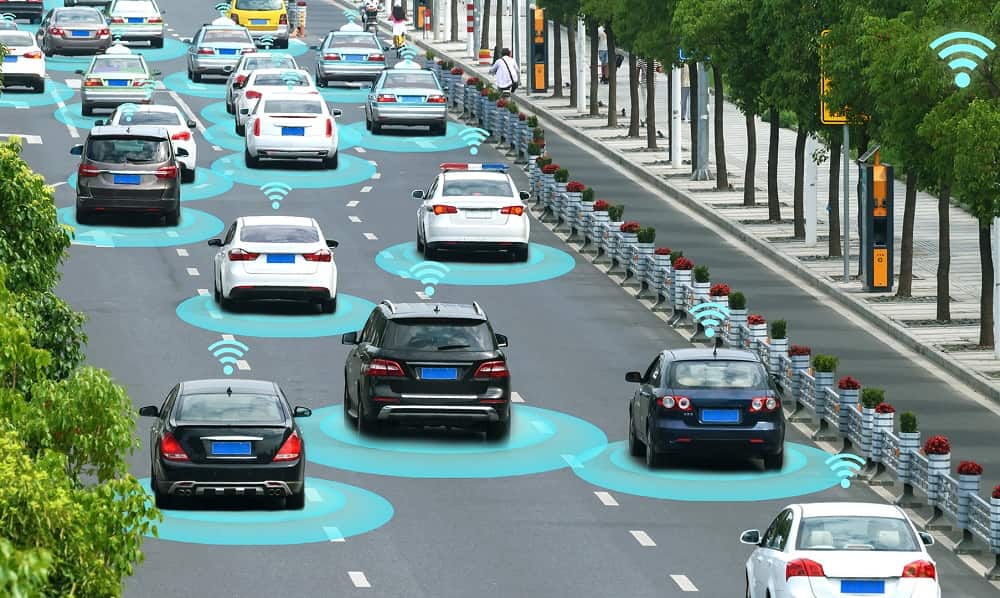
From resurfacing the road to installing charging stations in densely populated areas, shopping malls, or home charging stations. And apparently, self-driving cars are always more expensive than traditional ones, as the materials used to build these cars are also superior and more pricey than any gasoline or diesel cars combined.
All the work and efforts that need to be done to head towards a carefree future on the road require an enormous amount of resources, labor, and cost. And being perfect at everything is extremely difficult. Beware of a tomorrow filled with bills and costly services. Things may be better, but you may need to work harder a thousand times to keep up with the ages.
5. Information Insecurity
Using a manual car can already cause unexpected security problems as drivers’ info can be spread and sold intentionally. So think about it, for a modern car that integrates a lot of technological features that need continuous tracking and monitoring to ensure the operation of the entire automatic system, the vehicle owner’s information, in one way or another, can be leaked out in a more technologically and sneaky way.
To face these security issues, we need to be ready from today. Right now, we still can’t cover all the issues involved. However, we can always be best prepared and actively build our shields by continuing to research and improve the efficiency of driverless cars.
Face a future promising to be fun but dangerous, with a car packed with autonomous technology. And you may be surprised by many more of its bringings.
Self-driving Cars Pros And Cons: Closing
A safer and cleaner transportation future is becoming a reality. Advances in autonomous driving, data collection, and communications technology have thrived and gradually taken their deserved places within the car industry. We’re still not entirely convinced that the world is ready for driverless cars in the future. But we are optimistic that this type of vehicle will change and ease our lives towards the most modernized and fast-forward pages for the entire ahead times.
The above self-driving cars pros and cons will serve as both warnings and cheer-ups for future technological developments. If humans determine to follow this path, one day, our world may be filled with all kinds of sensors that can lead people to a next-level world of dreams.
For more car driving tips and industrial knowledge, follow Car From Japan right today.

